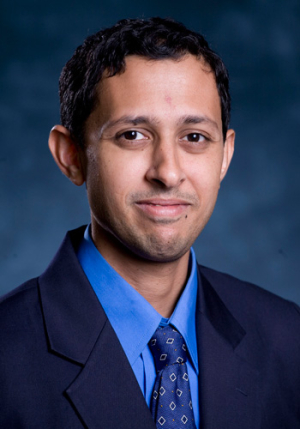A professor with the University of Houston Cullen College of Engineering has won his second major cancer research grant in four months, giving him a total of nearly $3.4 million to help develop cutting-edge treatments for the disease.
Navin Varadarajan, assistant professor of chemical and biomolecular engineering, received the $1.28 million grant from the Cancer Prevention Research Institute of Texas (CPRIT). He will use the funds to research immunotherapy, the practice of engineering immune system cells to fight specific diseases, including cancer. The National Institutes of Health awarded Varadarajan a $2.1 million grant in September to conduct immunotherapy research. While that grant focused on the effectiveness of engineered T cells, the CPRIT study is interested in T Cells and a second type of immune system cell, Natural Killer cells.
Immunotherapy, Varadarajan said, has shown tremendous promise in clinical trials, with some cancer patients even going into complete remission. Exactly how these treatments work is not known, though: How quickly do the engineered immune cells multiply when they encounter a tumor? What properties of these cells are most effective in fighting specific cancers? And do the descendants of the original cancer-fighting cells retain these properties?
These are the questions Varadarajan will seek to answer with these grants.
Central to this project are Varadarajan’s collaborators, including Laurence Cooper and Dean Anthony Lee, both of whom are physicians and researchers with the University of Texas MD Anderson Cancer Center. Each has developed the engineered immune system cells the team is studying, specifically chimeric antigen receptor T-cells and Natural Killer cells designed to fight leukemias and lymphomas.
One of the challenges of studying these cells is examining them at the single-cell level, said Varadarajan. The standard methods used to examine cells are good for looking at populations of cells but involve areas that are far too large to analyze them individually.
That’s why Varadarajan has developed the nanowell array. This polymer slide has tens of thousands of individual chambers carved into it. Each chamber is about 125 pictoliters in volume, just the right size to hold an individual cell.
“If we shrink the container small enough so that its dimensions are similar to those of a single cell, we can achieve almost single-cell resolution. So within the same footprint, we can look at lots of cells,” said Varadarajan.
Working with cells that have only been studied in the lab as well as those that have been injected into patients and then retrieved via blood sample, Varadarjan will use the nanowell array to isolate the engineered immune system cells. He will then characterize these cells, identifying their cancer-fighting properties and correlating these properties with their success in combating the disease.
These characterizations, he noted, will be carried out in collaboration with Badrinath Roysam, an image analysis expert and chairman of electrical and computer engineering at the Cullen College, as well as Peng Qiu, an assistant professor of bioinformatics and computational biology at MD Anderson.
"Immunotherapy is at the forefront of cancer treatment and research. In some cases it has actually resulted in complete remission," Varadarajan said. "To help the most people, though, we’ve got to understand exactly what properties of engineered cells are most effective at fighting cancer. This research will help us quickly identify those properties so they can be included in the future rounds of research and clinical trials."
